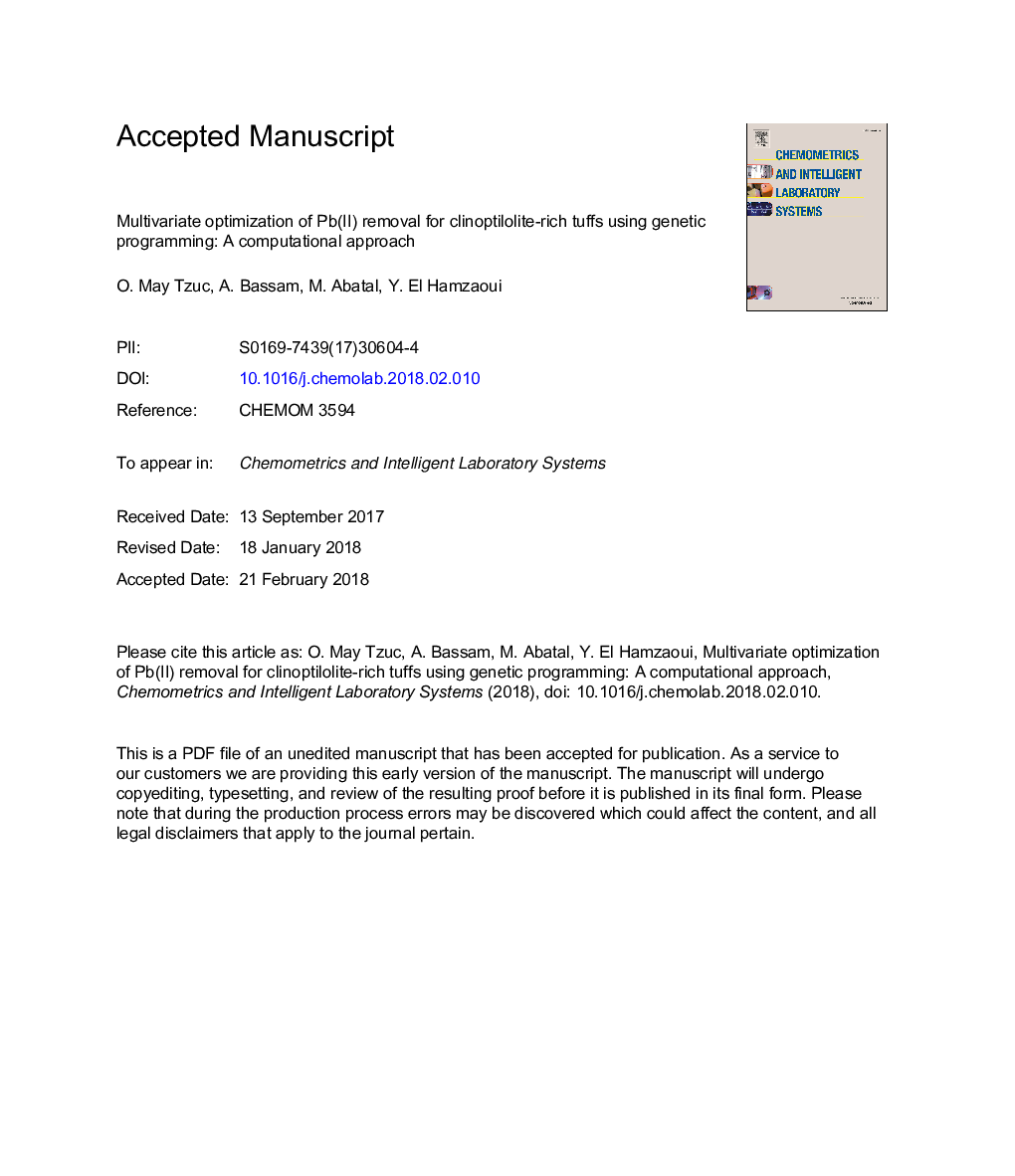| Article ID | Journal | Published Year | Pages | File Type |
|---|---|---|---|---|
| 7562004 | Chemometrics and Intelligent Laboratory Systems | 2018 | 30 Pages |
Abstract
In this study, a genetic programming (GP) model was developed to predict and optimize the Pb(II) removal capacity for natural, sodium, and acid-modified clinoptilolite-rich tuffs. Experimental process evaluated the sorption behavior of lead in aqueous solutions using unmodified and modified natural zeolite considering: the contact time, pH value, lead initial concentration, and sorbent dosage. The GP model was trained and tested with the experimental measurements and subsequently, compared with others multivariate analysis methods using three statistical criteria (coefficient of determination (R2), root mean square error (RMSE), and mean absolute percentage error (MAPE)). The results indicate that GP getting the better performance achieving a fitness of R2â¯=â¯98.0%, RMSEâ¯=â¯5.06â¯Ãâ¯10â2, and MAPEâ¯=â¯17.58%. Sensitivity analysis (SA) showed that the sorbent dosage was the most influential parameter with a sensitivity index of 0.219, following by the pH (0.059), and contact time (0.031). Based on GP model and SA, a multivariate optimization was conducted to compute the adequate conditions for a required sorption efficiency (98%). Optimize values were obtained at 0.10â¯g of sorbent mass, pH 5.0, 300.0â¯mgâ¯Lâ1, and 5.1â¯min contact time for natural clinoptilolite-rich tuffs; 0.65â¯g of sorbent mass, pH 5.0, 400.0â¯mgâ¯Lâ1, and 3.6â¯min contact time for sodium modified clinoptilolite-rich tuffs; and 0.65â¯g of sorbent mass, pH 3.0, 400.0â¯mgâ¯Lâ1, and 71.6â¯min contact time for acid modified clinoptilolite-rich tuffs. The computational approach presented can perform an assessment with errors less than 6%, indicating that it is a promising tool for the modeling and optimization of the sorption onto zeolite materials minimizing the time and operation cost. The proposed methodology can be used to take appropriate actions in the removing of this toxic heavy metal from the water. Besides, it can be implemented in studies corresponding to other sorption processes or similar.
Related Topics
Physical Sciences and Engineering
Chemistry
Analytical Chemistry
Authors
O. May Tzuc, A. Bassam, M. Abatal, Y. El Hamzaoui, A. Tapia,
